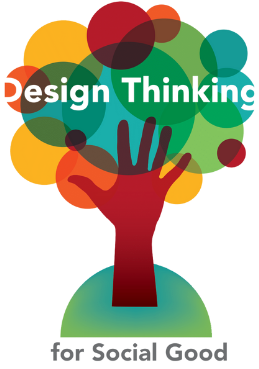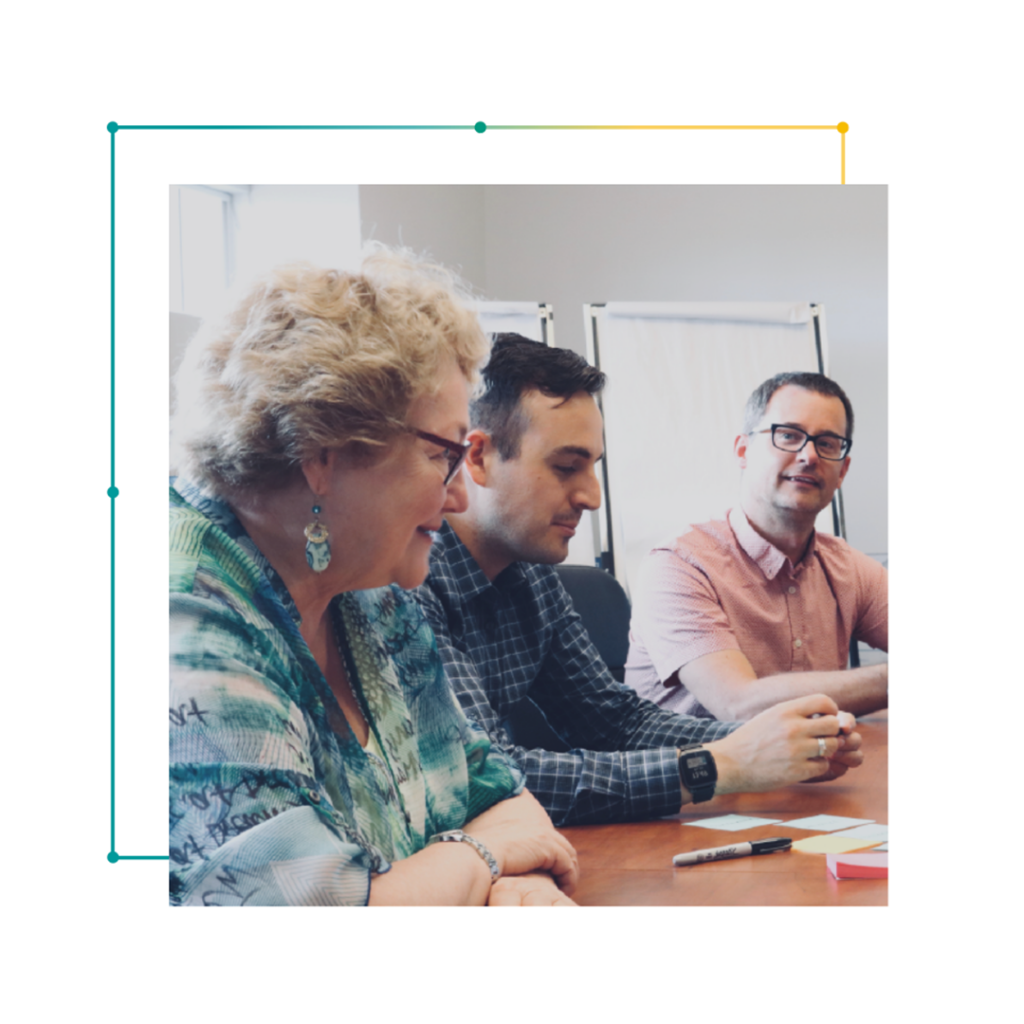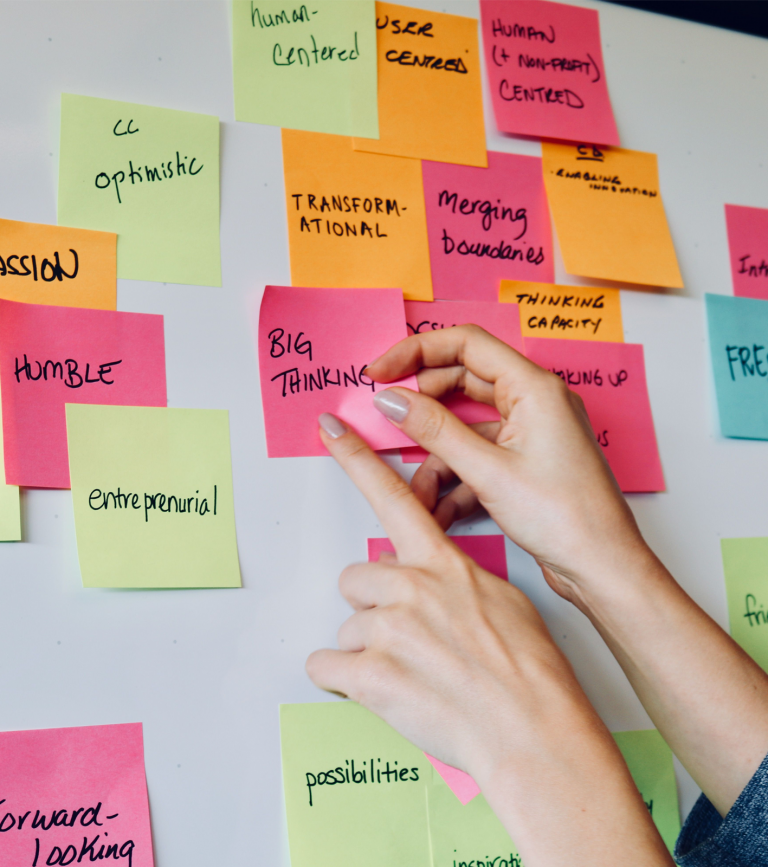Design Sprint Services

Our Program
With the support from the Lyle S. Hallman Foundation, and Suncor Energy Foundation, Capacity Canada has developed Capacity by Design, a design thinking program to help social good organizations rethink how they approach problem-solving in order to develop innovative solutions to complex challenges.

Stage 01
Problem Framing
The first stage involves proper problem framing. You can think of this by remembering the story of Goldilocks. Just as she wanted the chair that was sized just right, the porridge whose temperature was just right, and the bed whose softness was just right, so too must we evaluate a candidate problem.
In this stage, we start to dig into the motivations for solving a given problem, the assumptions that might affect that understanding, the scope of the problem, and who is involved (including and especially those with lived experience around the problem). The goals of this stage are to create a shared understanding of both the problem and the process, and work out logistics associated with the second stage – the design sprint.
Stage 1 Goals
• Meet with each other! This might be a phone conversation or a more in-depth discussion about your organization’s motivations and expectations for participating in Capacity by Design.
• Look at the problem with a critical eye.
• Examine data and research that your organization has on the problem.
• Scale the scope up or down as appropriate.
• Review and agree to a memorandum of understanding, outlining your organization’s commitment during the program and what Capacity by Design is responsible for delivering to you.
• Discuss intellectual property, public disclosure, and how we want to work together to share what we learn.
• Make a decision: is the problem a good fit for the Capacity by Design program?
• Look at alternative Capacity Canada programs or timelines for working through the problem.
Stage 02
Design Sprint
The second stage of the Capacity by Design program involves a week-long dive into the problem and its possible solutions. A team is assembled from the social good organization and guided by Capacity by Design facilitators, experts in design, business, social innovation, and technology. We start by building a shared understanding of the problem, the stakeholders, and the impact. From there, we generate a lot of ideas around possible solutions. We evaluate these ideas and choose one that we feel is worth exploring further (either because it seems like a good solution or because it will allow us to gather useful data about the problem).
Finally, we create a simple representation of that solution (a ‘prototype’) that we can put in front of actual users to test. The feedback we gather from this user testing is invaluable and feeds into future work (this is the ‘iterative’ nature of design thinking!)

Stage 2 Goals
• Gather data and research from a variety of sources.
• Challenge assumptions.
• Possibly interview people with lived experience, subject matter experts, etc.
• Design thinking provides several tools and techniques for ‘ideation’ (coming up with ideas).
• Decide what constitutes a good idea.
• Build consensus around which idea to dig into (and we’ll keep those other ideas for another day).
• Create one or more ‘prototypes’ (throwaway creations that will let us test an idea).
• Depending upon the sort of problem we’re working on (and how we want to solve it) we may create a simple website, a script for an interaction with a user, paper drawings, or…?
• Get our idea in front of people who would benefit from a solution and see what they think!
• Gather data, make notes, distill insights, and figure out what we’ve learned.

Stage 03
Support
The third stage in Capacity by Design involves supporting participants after the Design Sprint stage has finished. Good design is iterative, and while the immediate benefit of participating in Capacity by Design may be the ability to come up with and test a possible solution to your problem, we also expect organizations to benefit from the design leadership that they’ve gained.
As a capacity building organization, Capacity Canada recognizes the incredible benefit of mentorship and peer-to-peer support. Participants in the Capacity by Design program will have access to design thinking mentors and experts. Our goal is to nurture design leaders at progressive organizations, capable of tackling the tricky challenges.
Stage 3 Goals
• Participate in mentorship and peer-to-peer support programs.
• Explore other Capacity Canada programs.
• Possibly interview people with lived experience, subject matter experts, etc.
• Contribute to and participate in sharing case studies, articles, and presentations.
• Contribute to and participate in retrospectives, follow-up interviews, and sharing case studies, articles, etc.
• Share the experience of participating in Capacity by Design with colleagues.
• Over time, share the experiences (successes, roadblocks) you’ve had with design thinking in your organization.
Let's start the conversation.
Thank you for your interest in Capacity by Design! We hope you found answers to any questions you might have had while visiting this page.
Please contact Liz Dennis if you have any questions.
[email protected]



